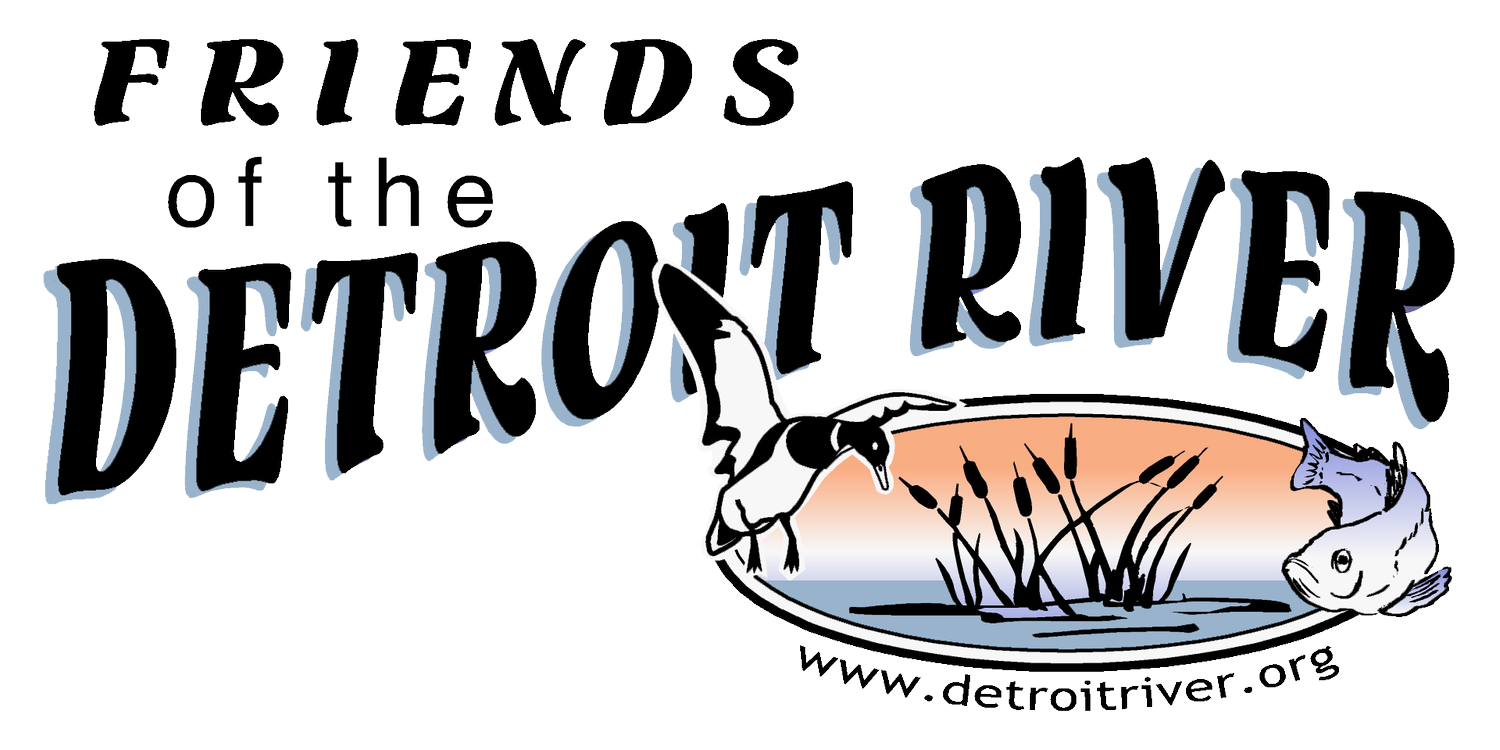Celeron Island
Funding Agency: U.S. Environmental Protection Agency, administered through the National Oceanic and Atmospheric Administration (NOAA)
Project Budget: $8,400,000
Start Date: August 2013
End Date: December 2020
Celeron Island, comprised of sixty-eight uninhabited acres at the mouth of the Detroit River near Lake Erie, is owned entirely by the State of Michigan and is managed by the Michigan Department of Natural Resources (MDNR) through the Pointe Mouillee State Game Area. This area of the Detroit River serves as one of the most important spawning areas for western Lake Erie. Significant positive recreational and economic impacts are anticipated because of this project that will enhance quality of life for southeast Michigan and northwest Ohio and further strengthen the Great Lakes fishery worth more than $7 billion annually.
The island's surrounding waters contain remnants of important emergent and submergent aquatic plants such as Vallisnaria sp. (eelweed), Elodea sp. (waterweed), and various Potamogeton sp. (pondweed). These waters are important spawning, nursery and refuge areas for sport, commercial and forage fish species. The island provides habitat for deer, mink, muskrat and bald eagle. Because it is situated within a major migratory flyway, it is an important resting spot for birds and waterfowl such as canvasback duck, trumpeter swan and American coot.
With high-water levels that ensued in the late 70's, the early 90's and again recently, much of the protective shoreline along the island’s southeastern side washed away. This erosion caused the loss of many complex wetland associations that once lined the outer shoreline and the inner bay, at the center of the island, and a reduction in the once abundant beds of submergent aquatic vegetation. Today, the island is actually two separate land bodies due to decades of erosion.
Project Scope: An initial grant award from NOAA combined early investigations at Celeron and Stony Islands into one project involving intense information gathering and analysis. Environmental Consulting and Technology, Inc. (ECT) was engaged by FDR to assist in the planning, design and engineering process. Information gathering was followed by review of various design alternatives for both islands. Once preferred alternatives were identified and vetted through governmental agencies and the public, the designs were further developed into preliminary construction documents and submitted for joint permit to the Michigan Department of Environmental Quality (later renamed Michigan Department of Environment, Great Lakes, and Energy) and U.S. Army Corps of Engineers. With additional funding by NOAA, both projects were independently advanced into construction. These projects are recognized as major steps in completing habitat re-construction among the islands in the lower Detroit River.
To address the severe erosion problem at the south end of Celeron Island, construction of off-shore emergent shoals are designed to reduce energy of incoming waves from Lake Erie and wind derived seiche activity, allowing for regeneration of the island's shoreline emergent vegetation. These shoals also create additional fish habitat and provide a protected area for migratory waterfowl and shorebirds.
Granular material along the calm-water side of one of the shoals accompanied by native plantings provides a new shoreline habitat. Restoration of a sandbar on the island’s northeast side creates a nesting, barrier beach habitat. Other habitat structures and features are included to promote habitat development, diversity and protection.
E.C. Korneffel Company was selected through a competitive bidding process to construct the project. Work began in the spring of 2018 and was completed by the end of 2019. Post-construction monitoring will follow in 2020 to document changes in wildlife populations based on the restoration work.
Project Output/Outcomes: Nearly 4,000 LF of habitat shoals near the southern and northeast shores of Celeron Island were created. These include:
2,870 linear feet of barrier habitat shoals (at the island’s south end)
550 linear feet of pollinator, bird and herpetofauna habitat (included with above)
150 linear feet of tern nesting habitat (included with above)
1,185 linear feet of nesting beach shoal (at the island’s northeast shore)
A variety of habitat design elements are incorporated to provide multiple niche habitats in support of existing fish and wildlife species. These include:
11 mudpuppy structures
32 basking log/log bundles
1 snake hibernacula
4 fish spawning beds
Project Data
These data and related items of information have not been formally disseminated by NOAA, and do not represent any agency determination, view, or policy.












